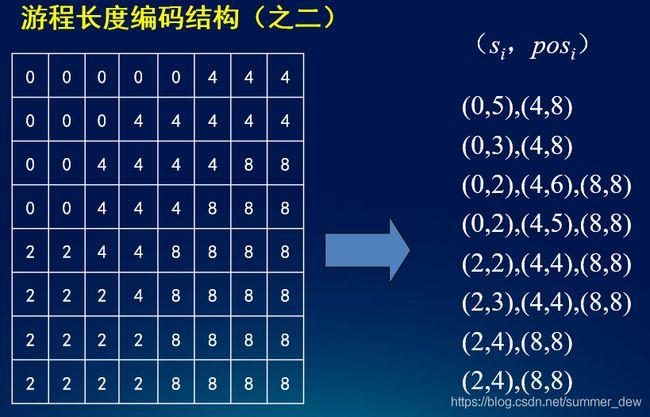您所在的位置:首页 - 科普 - 正文科普
编程里表示什么
![]() 泉忠
2024-05-03
【科普】
649人已围观
泉忠
2024-05-03
【科普】
649人已围观
摘要**UnderstandingtheucharDataTypeinProgramming**Intherealmofprogramming,especiallyinlanguageslikeCandC
Understanding the uchar Data Type in Programming
In the realm of programming, especially in languages like C and C , the `uchar` data type holds significance. This type, short for "unsigned char," represents an unsigned character. Let's delve into its significance, applications, and usage guidelines.
What is uchar?
`uchar` is a fundamental data type used to store unsigned characters. In languages like C and C , a character is typically represented as a single byte (8 bits), capable of holding values from 0 to 255. Unlike a regular `char`, which can hold both positive and negative values, `uchar` exclusively stores nonnegative values.
Significance and Applications
1.
Image Processing:
In image processing applications, pixel values are often represented as unsigned integers ranging from 0 to 255. `uchar` finds extensive usage in storing pixel values in such scenarios due to its ability to represent the full range of pixel intensities.2.
Embedded Systems:
Embedded systems programming frequently deals with lowlevel hardware interactions where unsigned data types are preferred. `uchar` provides a concise representation for bytesized data in these contexts.3.
File I/O:
When dealing with binary files or raw byte streams, `uchar` can be used to represent byte data read from or written to files. It ensures that byte values are interpreted in an unsigned manner, crucial for maintaining data integrity.4.
Network Programming:
In network protocols, data is often tran***itted in the form of bytes. `uchar` is useful for handling such data, ensuring that byte values are treated as unsigned during tran***ission and reception.Usage Guidelines

1.
Range of Values:
As an unsigned data type, `uchar` can hold values from 0 to 255. Ensure that operations involving `uchar` values do not result in overflow, as it may lead to unexpected behavior.2.
Type Conversion:
Be cautious when converting between `uchar` and other data types, especially signed types like `char` or `int`. Explicit type casting may be necessary to avoid unintended results, such as data loss or unexpected behavior due to sign extension.3.
Arithmetic Operations:
When performing arithmetic operations involving `uchar` values, ensure that the result does not exceed the valid range of 0 to 255. Overflow may occur if the result exceeds the maximum value representable by `uchar`.4.
Memory Usage:
While `uchar` conserves memory due to its singlebyte size, avoid excessive usage in large datasets, as it may lead to increased memory consumption. Consider alternative data types or data structures for memory optimization if necessary.Example Usage (C )
```cpp
include
int main() {
uchar pixelValue = 200; // representing pixel intensity
std::cout << "Pixel Intensity: " << static_cast
// Arithmetic operations
uchar result = pixelValue * 2; // potential overflow, ensure bounds checking
std::cout << "Result: " << static_cast
return 0;
}
```
Conclusion
In the realm of programming, understanding the `uchar` data type is essential, especially in contexts involving lowlevel data manipulation, such as image processing, embedded systems, file I/O, and network programming. By adhering to usage guidelines and best practices, developers can leverage `uchar` effectively to handle bytesized data in a reliable and efficient manner.
Understanding the uchar Data Type in Programming
Tags: 编程里的变量是什么意思 编程里表示什么 c语言中uchar 编程里变量是什么意思
版权声明: 免责声明:本网站部分内容由用户自行上传,若侵犯了您的权益,请联系我们处理,谢谢!联系QQ:2760375052
最近发表
- 探索日本核污染水排放,现状、影响与应对策略
- 全职妈妈离婚获2万元经济补偿,揭秘背后的真相与启示
- 王琳惊艳亮相,54岁穿短裙婚纱走秀的优雅与活力
- 继续深耕中国,共创共享机遇
- 千位歌迷在刀郎演唱会现场外,音乐盛宴如梦如幻
- 渔船遇海盗袭击,3名中国人失踪,紧急救援与深入理解
- 小米试驾体验遇尴尬,雷军秒道歉引热议
- 香港歌手李国祥去世
- 音乐人因刀郎跨越西洋乐与中国音乐的奇妙转变——深度解读与启示
- 清华毕业生失踪背后的罗生门,揭开真相与寻找答案
- 韩国救山火消防员盒饭,一份充满人间温情的瞬间
- 黄金价格的终极目标,探寻价值与投资方向
- 小区惊魂,儿童车祸事故的警示与启示
- 湖南38个机关事业单位围墙全拆,开启新篇章
- 车主掉头遇红灯,后车滴滴巧应对
- 探索云南曲靖市会泽县的地震事件
- 新郎没拉裤子拉链,新娘手动闭链的浪漫婚礼
- 10岁女孩高烧去世,被诊断为7种疾病
- 拥抱与冒险,两个小孩的温馨瞬间与泥坑的奇妙旅程
- 女厅官落马后,下属被查风波掀起波澜
- 勇敢逆行,诠释人间大爱——关于溺亡外卖员及其家庭的故事
- 大摩小摩去年四季度疯狂买A股
- 从人去楼空歌词中读懂离别的深情与生命的哲思
- 甲亢患者学功夫之路,挑战与成长
- 九牛一毛歇后语——生活中的小智慧大道理
- 多名大陆配偶被限期离台 台各界发声
- 和巧虎一起玩躲猫猫,让孩子在游戏中学习与成长!
- 王者荣耀游戏体验优化与应对关键问题的应对策略
- 探索趣味与成长的数字乐园
- 地震的力量,缅甸与汶川地震的对比
- 畅享军事模拟游戏的无限乐趣
- 缅甸地震,灾难中的救援与应对
- 董宇辉报平安,温馨时刻
- 机战王洛洛历险记全集——一场童年的奇幻冒险之旅
- 揭开美军飞行员之怒,深入了解行为后果与安全责任
- 揭开全国重名查询系统的神秘面纱,如何轻松找到与你同名的人
- 缅甸地震中的救援行动与启示
- 揭秘你的另一个星座,探索隐藏的性格密码
- 东旭集团证券违法拟被罚17亿元
- 深入解析暗黑破坏神攻略,助你成为圣休亚瑞的传奇英雄
- 专家解读地球是否进入活跃期文章标题
- 畅玩经典——实况足球10中文版的全面解析与攻略
- 牛肉市场中的中方与美国厂商,续约与挑战
- 畅玩捕鱼达人单机版,轻松体验水下冒险的乐趣
- 王钰栋应对脚踝受伤,回应与处理
- 探索自然的灯塔——野外女教师的角色与魅力
- 华阳集团,2024年净利润增长引领行业新篇章
- 探索南美大陆的地理瑰宝
- 男子做马拉松陪跑一场收入6000元
- 69岁阿姨的退休生活,自驾游的传奇之旅文章标题及内容


